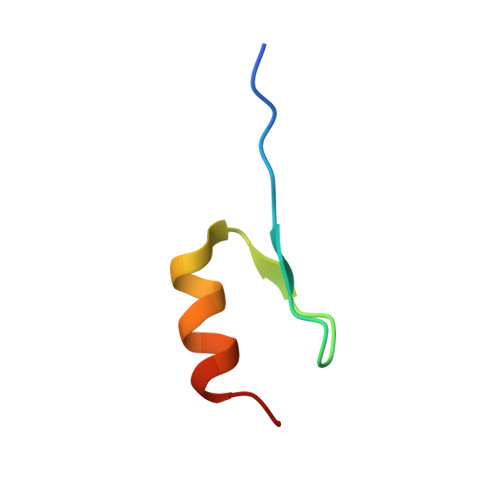Recruitment of Tbk1 to Cytosol-Invading Salmonella Induces Wipi2-Dependent Antibacterial Autophagy.
Thurston, T.L., Boyle, K.B., Allen, M., Ravenhill, B.J., Karpiyevich, M., Bloor, S., Kaul, A., Noad, J., Foeglein, A., Matthews, S.A., Komander, D., Bycroft, M., Randow, F.(2016) EMBO J 35: 1779
- PubMed: 27370208
- DOI: https://doi.org/10.15252/embj.201694491
- Primary Citation of Related Structures:
5AAQ, 5AAY, 5AAZ - PubMed Abstract:
Mammalian cells deploy autophagy to defend their cytosol against bacterial invaders. Anti-bacterial autophagy relies on the core autophagy machinery, cargo receptors, and "eat-me" signals such as galectin-8 and ubiquitin that label bacteria as autophagy cargo. Anti-bacterial autophagy also requires the kinase TBK1, whose role in autophagy has remained enigmatic. Here we show that recruitment of WIPI2, itself essential for anti-bacterial autophagy, is dependent on the localization of catalytically active TBK1 to the vicinity of cytosolic bacteria. Experimental manipulation of TBK1 recruitment revealed that engagement of TBK1 with any of a variety of Salmonella-associated "eat-me" signals, including host-derived glycans and K48- and K63-linked ubiquitin chains, suffices to restrict bacterial proliferation. Promiscuity in recruiting TBK1 via independent signals may buffer TBK1 functionality from potential bacterial antagonism and thus be of evolutionary advantage to the host.
Organizational Affiliation:
Division of Protein and Nucleic Acid Chemistry, MRC Laboratory of Molecular Biology, Cambridge, UK MRC Centre for Molecular Bacteriology and Infection, Imperial College London, London, UK.















